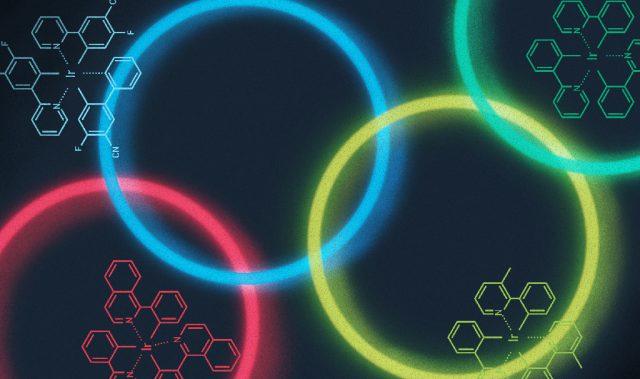
AsianScientist (Jul. 6, 2015) – Researchers have found a replacement for organic halides in industrial carbon-carbon bond formation: aromatic esters. The finding, published in Nature Communications, not only makes carbon-carbon bond formation more environmentally friendly but also expands the range of substrates that can be used.
Making carbon-carbon bonds is an important process used to synthesize useful pharmaceuticals, agrochemicals and organic materials. The Suzuki-Miyaura cross-coupling reaction, which won Professor Akira Suzuki the Nobel Prize in chemistry in 2010, is a powerful method to create carbon-carbon bonds that typically uses a palladium catalyst to couple boronic acid with organic halides. However, the process generates corrosive byproducts, prompting the search for alternative coupling partners.
In the present study, synthetic and theoretical chemists at the Institute of Transformative Bio-Molecules (ITbM), Nagoya University and the NSF Center for Selective C-H Functionalization (NSF-CCHF) at Emory University have shown that a relatively inexpensive nickel catalyst triggers the decarbonylative cross-coupling between aromatic esters and boronic acids.

Esters are carbonyl compounds found in fats and oils, and are known for their distinctive odors such as in bananas and pineapples, thus making them a popular ingredient in perfumes. Due to their high commercial and synthetic accessibility, the use of esters to couple with boronic acids in the Suzuki-Miyaura cross-coupling greatly expands the scope of available substrates for the reaction.
“From its low cost and our extensive experience, we chose to use nickel as a catalyst for developing the decarbonylative cross-coupling reaction with esters,” says Kenichiro Itami, Center-Director and Professor at ITbM.
“Through screening of various conditions, we were pleased to find that a catalytic amount of nickel acetate along with sodium carbonate as a base is effective for the cross-coupling reaction of aromatic esters with boronic acids, to obtain the desired the decarbonylative products in good yield.”
Nickel acetate is approximately 300 times less expensive compared to palladium acetate and proved to be active on the gram-scale cross-coupling between aromatic esters and boronic acids. In addition, a range of aromatic ester substrates was compatible in the reaction and no side products from carbonylative coupling were observed.
This chemoselective cross-coupling reaction has also proved to be applicable towards the synthesis of flavone and its derivatives, and has also been utilized to functionalize a phenyl ester derivative of telmisartan, a drug molecule with a relatively complex structure.
Theoretical calculations conducted by Professor Djamaladdin Musaev of Emory University provided valuable insight to the mechanism of the decarbonylative cross-coupling reaction between aromatic esters and boronic acids. The role of the base and the order of the reaction steps were identified by density functional theory calculations, indicating that the decarbonylation step occurs after transmetalation, which is accelerated by the presence of the base.
“This is a beautiful work in the frontier of organic transformations, and establishes a novel, relatively inexpensive and environmentally friendly synthetic strategy for carbon-carbon bond formation. The accompanied computational efforts revealed key mechanistic details of this novel reaction,” says Musaev.
Itami and his colleagues envisage that ongoing advances in this reaction method may lead to the development of new industrial processes for making biologically and structurally active compounds.
The article can be found at: Muto et al. (2015) Decarbonylative Organoboron Cross-Coupling of Esters by Nickel Catalysis.
———
Source: ITbM.
Disclaimer: This article does not necessarily reflect the views of AsianScientist or its staff.












